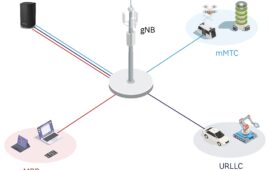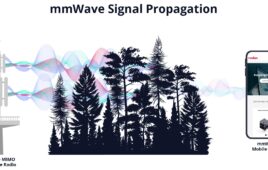The Deutsche Messe exhibition site in Hannover, Germany will get a private 5G network for testing products and applications.
Beginning with 3GPP Release 16, 5G adds features such as low latency that address industrial applications, robotics, and V2X communications. Testing these industrial products and software apps for 5G connectivity often requires a space large enough for robots and vehicles to move around. Many industrial locations, however, lack the space to accommodate such tests, nor do they have private 5G networks.
Later this year, the Deutsche Messe exhibition site in Hannover, Germany will make such a network available for product testing. Siemens will play a major role in developing that network. To find out how, 5G Technology world spoke with Sander Rotmensen Director of Industrial Wireless Communication Products at Siemens.
While the 1.4M m² site will have its own private 5G network for event attendees, one hall with function as a test site for 5G-connected devices — robots and vehicles. The test bed hall will be available for rental when it isn’t used for exhibitions.
“Imagine you are a robot builder,” said Rotmensen. “You can rent a hall in the exhibition center and test your product there before bringing it to market. That was one of the key factors in making the Deutsche Messe campus a smart venue. It’s a way to use the exhibit hall for testing 5G products when there’s no live event.”
Operating in the mid-band 3.7 GHz to 3.8 GHz, the private network will consist of all network components — everything from the radio to the network core. It won’t connect to the internet because installations using that frequency band aren’t licensed for internet access in Germany, according to Rotmensen.
“Once the German Government decided to support spectrum for local campus networks,” said Rotmensen, “we began to develop our own private 5G network, from core to RAN. We’re not there yet, but the opportunity at Deutche Messe in Hannover is such an interesting use case.” Siemens currently has a prototype of its private network based on 3GPP Release 15 operating at its Automotive Showroom and Test Center in Nuremberg (see video below).
At press time, no decision had been made as to whether the network will use an open or proprietary radio access network (RAN). From the device-under test user’s perspective, that shouldn’t matter, though an open RAN might offer the possibility to add specific features as they become available on the market.
Setting up a 5G network in an exhibition hall requires knowledge of the hall’s size and construction. Every hall is different. To get full radio coverage, network designers must account for floor size and obstacles that could impede signal strength such as poles, walls, and ceiling overhangs. The network could possibly use a series of small cells and picocells to circumvent for signal obstacles.
While the goal is to have an operating network based on Release 15 by September 2021, Rotmensen recognizes that first, engineers will need the equipment that takes advantage of Release 16’s features. The company has announced a Release 15 based industrial 5G router, expected availability is Spring 2021.
Related articles:






Tell Us What You Think!